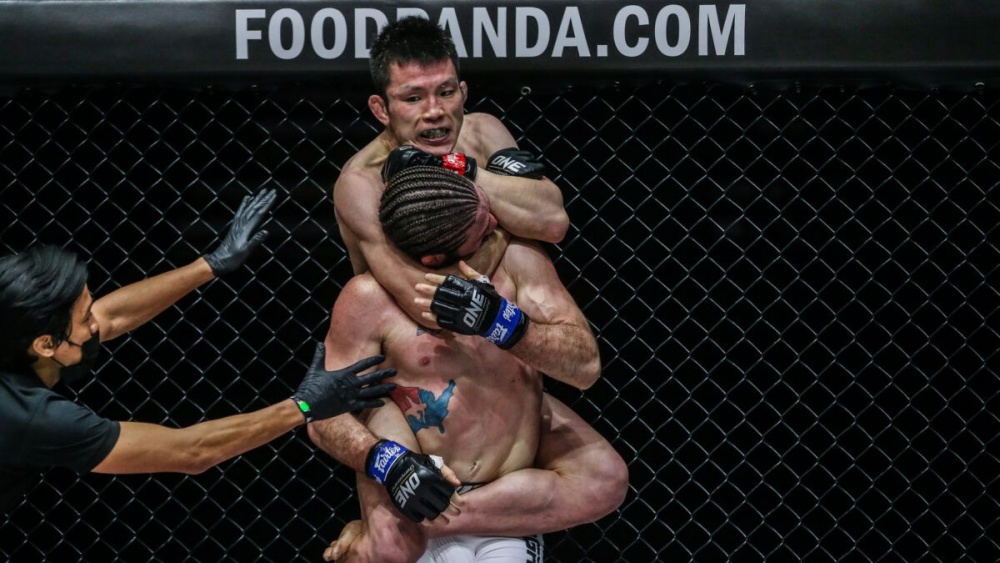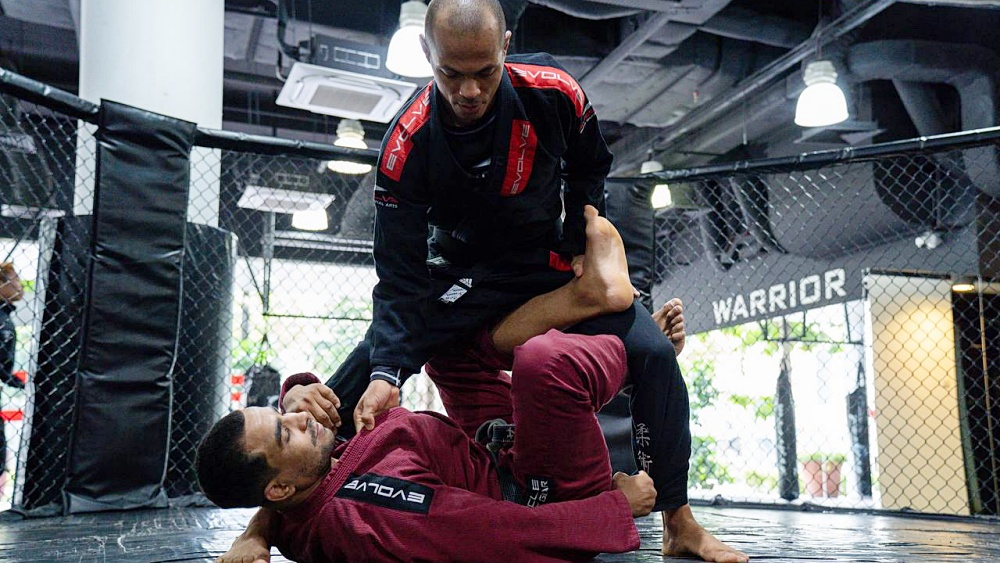In Brazilian Jiu-Jitsu, there is a thin line between a choke and a neck crank that people hardly notice. Even though cranking the neck is illegal in many competitions, a choke turned into a neck crank is not.
Under the rules of the IBJJF, spine-twisting submissions are illegal at all belt levels. It is important for a grappler to understand how to attack the neck safely without getting disqualified or, worse, injuring your opponents.
Neck cranks, especially when done with full force, can stress the neck and may lead to nagging injuries in the long run. In this article, we will talk about how to safely utilize the neck crank in BJJ.
What Is A Neck Crank?
A neck crank in BJJ happens when a grappler applies pressure to the opponent’s spine by pushing or twisting in ways it should not go. The most effective submission in BJJ is the choke. It can put relatively bigger and stronger opponents to sleep.
A grappler’s primary goal is to choke the opponent when attacking the neck. Basically, two things may happen when you apply a choke – the opponent taps to the choke, or the opponent fights the choke and moves their head at an angle to prevent the strangle.
In cases where the latter happens, the initial attempt of the choke can be transformed into a neck crank. You can also use a crank to set up a choke. This situation can also work in reverse, meaning that you can use a crank to set up a choke.
Neck cranks are like joint locks in a way that you can easily injure your training partners if you aggressively and relentlessly apply them as fast as you can during training. Although neck cranks can be an equally effective submission, the problem lies with their safety.
A strong-willed opponent looking to escape a choke may get their neck cranked if they move their neck in weird directions. Chokes are the safer submission option because the risk of getting injured is minuscule, and they can be applied with good technique against a training partner, whereas a crank relies on twisting the neck to force a tap.
We talked about how sometimes chokes can become a neck crank, so if you are the one applying the submission, please be mindful of how you use your techniques. Remember that you can always reposition your body once your opponent moves to a side. It is easy enough to adjust your control to ensure that you are in the prime spot for the choke.
Alternatively, you can also transition to other forms of attack once it gets harder to secure the choke. It is understandable that you’d want to secure the tap, especially in competitions, but causing injury to another practitioner in the process is not worth it. If you really have to finish the match with the neck crank, please apply it with just enough force.
Rear Naked Choke Using The Neck Crank
As mentioned above, a neck crank flows naturally with any form of choke. In this video, Alder Hampel from 10th Planet Jiu-Jitsu shows his approach to the move.
Let’s assume that you already secured the back mount, but the opponent tucks their chin and stays super defensive. Use your top hand (choking arm) and slide with your thumb under the opponent’s chin until your wrist reaches under the chin.
Once your wrist comes to the chin, use it to hook and push. This will turn the opponent’s face to the side while cranking their neck. Pull their face backward as you grab their shoulder as much as possible. This will amplify the pressure and makes it harder for them to move.
Free your bottom hand and use it to push the top of the opponent’s head and pop it to the opposite side. The opponent will immediately face the opposite direction as you push the top of their head. This is a common reaction because they need to relieve the pressure somehow.
Now that the opponent faces the choking arm’s direction, finish the rear-naked choke by grabbing your bicep with your choking arm while the other hand pushes the opponent’s head from behind.
Neck Crank For BJJ
The risk of injury from a neck crank is very real. This is the reason why many grappling competitions ban it. Nevertheless, it is always a good learning experience to at least know how to apply it. In this video, Gustavo Gasperin from MMA Leech shows his approach to the neck crank.
The neck crank shown in the video starts from the turtle position, with the intent to move to the crucifix. To start, choose a side when the opponent turtles up. Whichever side you control, trap the nearest arm using your legs. Once the arm is trapped, use your hand to control the opponent’s other arm and roll over their shoulder to the opposite side to land in the bottom crucifix.
The crucifix position already offers opportunities to apply different submissions, but the focus of the video is to apply the neck crank from the crucifix. The neck crank in the crucifix position is applied by coming on top from the bottom crucifix. Use your controlling arm (the arm that’s controlling the opponent’s opposite arm) to post on the mat as your other arm scoops below the opponent’s armpit.
As you use your elbow to post on the mat, drive the opponent’s arms back with your other arm while trapping the opponent’s other arm between your legs. Drive your body against their neck as you move your body up to a turtle position to further solidify the neck crank.
Conclusion
Neck cranks are proven to be effectively painful submissions. The safest way to utilize the neck crank in Brazilian Jiu-Jitsu is to use it as a setup to secure your submission attempts. Take note that chokes are always a great follow-up to a neck crank, so always be ready to transition to the strangle once you feel an opening.
Remember that training martial arts should be fun and safe for everyone involved. The knowledge and confidence you acquire on the mats should be for self-improvement. Never boost your ego by hurting other practitioners regardless of the situation.
You may also like:
















